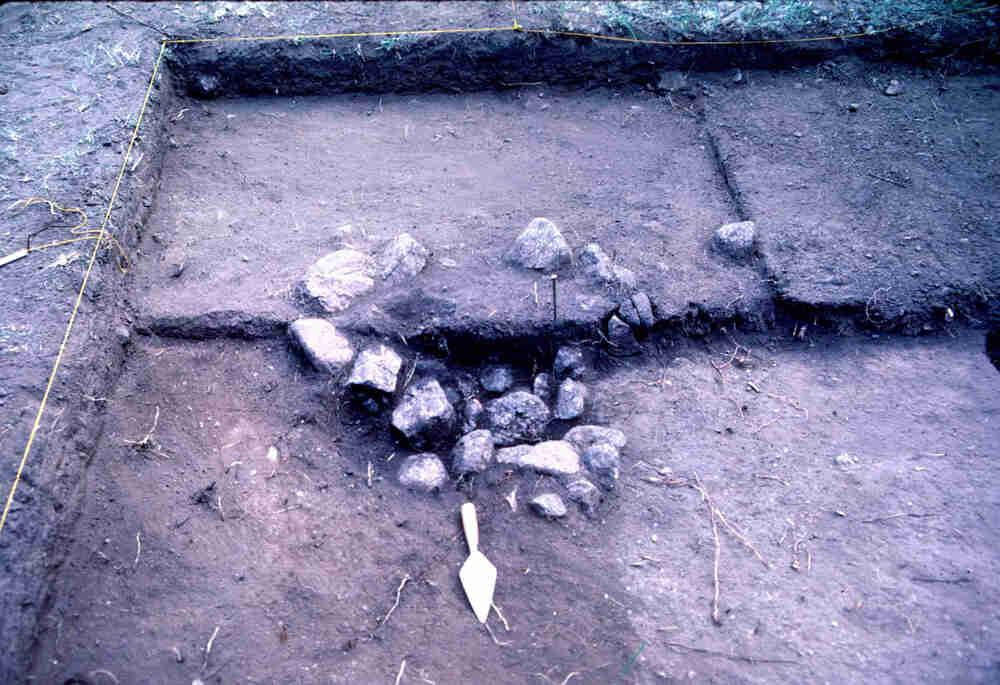Radiocarbon Dating
Full Article
Radiocarbon dating is the most common technique used in ascertaining the age of archaeological and paleontological sites during the last 45,000 years. Developed by a chemist born in Colorado, there are now commercial and academic laboratories across the globe that conduct radiocarbon dating. Radiocarbon dating has made a substantive contribution to our understanding of Colorado prehistory by allowing archaeologists to place excavated sites in chronological order and allowing comparison of contemporary archaeological cultures.
Development
While Willard Libby received the Nobel Prize in Chemistry in 1960 for his contributions to the development of the radiocarbon dating method, the process that led to the discovery of this method began much earlier. The isotope, Carbon-14, abbreviated as 14C (the isotope number is followed by the element) was isolated in 1940 by two of Libby’s students while working on the Manhattan Project. It had been shown that 14C is continually being produced by cosmic rays colliding with atmospheric nitrogen. Libby surmised that traces of 14C could always be found in carbon dioxide in the air. Carbon-14 is absorbed by plants through photosynthesis. After a plant died, it could no longer absorb 14C. The plant’s remains gradually lost 14C at a constant rate through radioactive decay to Nitrogen-14 (14N). The time that it takes for one half of the 14C in a sample to decay to 14N is about 5,730 years. This amount of time is known as the radioactive half-life. By measuring how much 14C is left in the dead plant material, it is possible to determine when the plant died. Organic matter derived from animals can also be dated since animals absorb 14C into their bodies by eating plants or by consuming animals that eat plants.
Libby also developed a detector sensitive enough to measure the amount of 14C in a sample. The first radiocarbon studies conducted by Libby focused on a variety of organic materials whose age was known or suggested through previous research. The first dated materials included wood from Egyptian tombs, linen wrapping from one of the Dead Sea Scrolls, and heartwood from a California sequoia. Radiocarbon dating is useful for dating organic materials as old as 45,000 to 50,000 years, after which little 14C remains in the sample.
The conventional method of radiocarbon dating involves counting beta particles, which are emitted when 14C atoms in a sample decay. Sample sizes of one gram or greater are required for conventional dates. More recently, accelerator mass spectrometry (AMS) has become widely available. With this technique, a sample’s 14C atoms are directly counted, meaning that samples can be much smaller. Recent developments in instrumentation have enabled radiocarbon dating to be conducted at archaeological sites rather than in a dedicated laboratory.
Challenges
Since Libby’s pioneering work, various factors have been identified that affect the atmospheric carbon reservoir. Atmospheric testing of nuclear weapons in the late 1950s and early 1960s greatly increased the amount of radiocarbon in the atmosphere, so the decay rate of fourteen events per minute has more than doubled. Therefore, radiocarbon dates are calculated to a “pre-bomb” age of 1950. Other factors complicating the accuracy of radiocarbon dating include the burning of fossil fuels, volcanic eruptions, and fluctuations in the earth’s magnetic field, all of which alter the concentration of 14C in the atmosphere. This makes it difficult to produce an accurate radiocarbon date for artifacts or other samples affected by these factors.
Since the production of 14C in the atmosphere is not consistent, scientists have addressed fluctuations in the global reservoir through time by using calibration curves calculated by dating materials of precisely known age. The best samples for the construction of calibration curves are tree rings where individual annual rings and annually laminated sediments are dated by AMS. Ocean corals and speleothems (cave deposits such as stalactites) dated by another radiometric method—Uranium-Thorium dating—have also helped to extend the calibration curve beyond the age of the most ancient tree-ring chronologies. Consequently, dates are expressed as radiocarbon years before present rather than as calendar years.
The type of sample can also impact the results of the date. Archaeologists are interested in the absolute age that a specific event took place, thus the dating method should be as accurate and precise as possible. Dating a sample of wood charcoal from an archaeological feature such as a hearth might include pieces of wood of different ages. A radiocarbon date would then be an average of the range of ages of the different pieces of wood charcoal. Likewise, standing dead trees that may be over 1,000 years old have been documented in the American Southwest and northern Mexico. Dating charcoal that originated from such dead wood would result in a date that could be centuries older than the actual burning of the wood in a hearth. Dating seeds and annual plants using AMS dating is a common method of avoiding the problems in dating wood charcoal.
Radiocarbon has become the method of choice to determine the age of events in the Paleo-Indian and Archaic periods of Colorado prehistory and for more recent occupations of the Formative, Protohistoric, and Historic periods, to which tree-ring dating cannot be applied. Research continues to refine the calibration of radiocarbon dates to calendar dates, expand the range of organic materials that can be dated, and extend the period for which materials can be dated.











